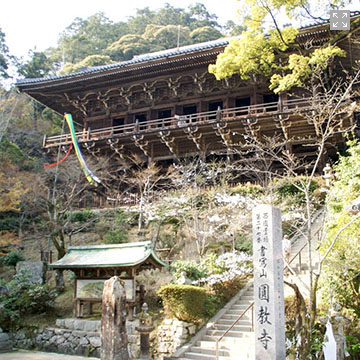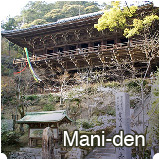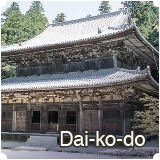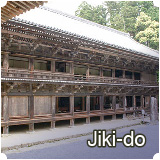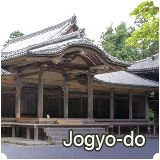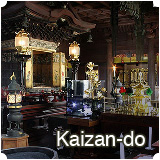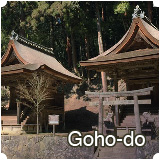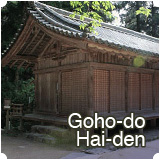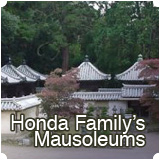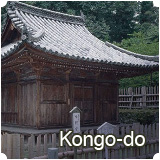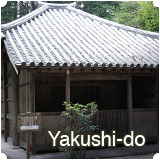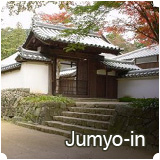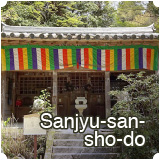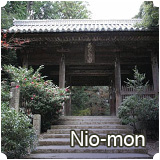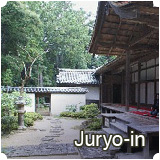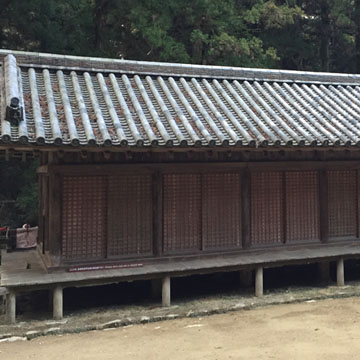The Layout of Temple Buildings
Mani-den / 摩尼殿
Meaning “As-you-wish”, “Mani” translates from “Nyoi” in Sanskrit.
Built in 970 (Tenroku 1st yr), Mani-den is dedicated to Roppi-Nyoirin-Kanzeon-Bosatsu: Avalokitesvara Bodhisattva (the Buddhist Saint of Mercy) a statue of which is enshrined inside holding “Nyoi-hoju”, the wish fulfilling gem, in one of its six hands.
Before Mani-den was constructed, receiving a vision of a celestial maiden worshipping a cherry tree, Shoku Shonin was inspired to carve a statue of the Bodhisattva of Mercy atop the live tree with its roots.
Later the building with a large veranda, supported by tall pillars, was added to stand halfway up the rocky mountain.
After standing for nearly 1000 years, the temple burnt down in 1921 (Taisho 10th yr).
Reconstruction of the structure we see today was completed almost as it was on the basis of the remains and original surviving dimensions in 1933 (Showa 8th yr).
Roppi-Nyoirin-Kanzeon-Bosatsu is open to viewing only once a year on January 18th, Shusho-e, also known as Oni-oi-no-hi (the Buddhist ceremony of dispelling evil spirits through dance).
Enshrined here, and designated as Important Cultural Properties, Mokuzo-Shitenno-ryuzo (wooden standing statues of the Four Celestial Kings) are represented as statues.
a National Registered Cultural Property
a Cultural Property designated by Himeji City
Roppi-Nyoirin-Kanzeon-Bosatsu-zo / 六臂如意輪観世音菩薩像

TBA...
Shitenno-ryuzo / 四天王立像

Shitenno-ryuzo (standing statues of the Four Celestial Kings) as well as Shaka-Sanzon-zo (a statue of Shakyamuni flanked by two attendants) in Jogyo-do were made by Kanna Shonin (Priest Kanna) in 986 (Kanna 2nd yr).
Carved in the Ichiboku-zukuri (a single piece) style from Hinoki (Japanese cypress wood), the statues are now enshrined in Mani-den.
